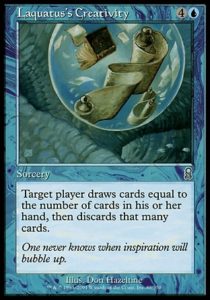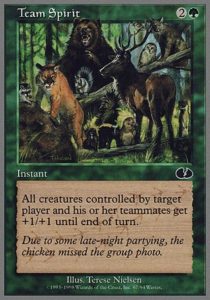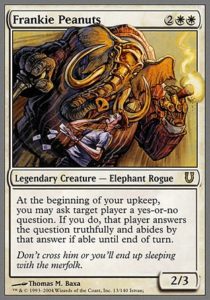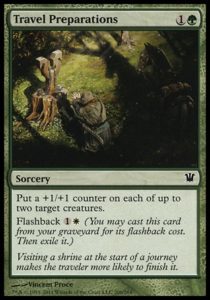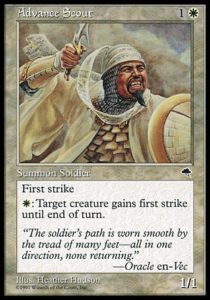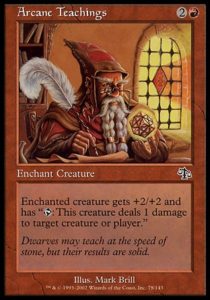It’s late September, which means that I’m bored with the Core Set, playing less Magic, and eagerly awaiting next weekend’s prerelease. With the Core Set going away, hopefully this will be my last such September.
Aside: I actually quite enjoy Magic Origins draft. It has a lot more to it than pretty much every other Core Set and is an excellent final chapter to the Core Set Saga. I think it’s a substantially better Limited format than Dragons of Tarkir. However, I got extremely burnt out on Dragons; Origins has become my slack-off set so that I can be excited for Battle for Zendikar. Hopefully the Spring set being entirely new will alleviate summer burnout in the future.
While I’ve been less excited about Magic lately, I’ve had my hands more than full with grad school. I’m a full time student at NYU’s Game Center (which I’ll continue to be for two years), so I’ve been studying game theories, designing games, and coding all month long. I’ve got my first ever digital game done, which any of you is welcome to play. It’s a modification project, so it’s based on an existing game (yes, I know it’s also employing an existing IP, but I’m not selling or making any money on this game; I’m merely using Zelda imagery because I love the series and it’s a tweak to the original game I’ve modified).
While I’m on the subject of projects, this weekend had a surprise and fun bit of work. I’ve been behind on my Battle for Zendikar spoilers (I’d skimmed them, but hadn’t pored over them as I usually do), so when I tuned into the Community Cup on Twitch, I realized I had no predictions as to what the Limited format would look like. I wished the Doc the best of luck, eager to see what the Community Team had decided about the format. He responded by asking if I had a pick order to give the Community Team.
Suddenly, I had a job to do.
It took about four hours to plop every BfZ common into a Google Doc. I categorized them and ranked them by an approximate guess of power/pick order, then did some surface analyses of the format (such as how good the common removal is, which colors had the most top tier commons, and how many common allies there are). I ended up with this spreadsheet, which I’m happy to share with you all.
I don’t expect to have predicted the format particularly accurately, given that I’ve never played with the cards and I’m not LSV (and not even LSV bats 1.000 when it comes to predicting cards—no one can). However, any starting point is better than none.
(No comment on whether the Community Team used or benefited from my work. I’ll just optimistically assume it had some small, but tangible impact.)
So, with my document available, I encourage you to do one of two things:
1. If you want to feel more prepared for this weekend’s prerelease, give it a good look.
You want to know as much of the commons as possible before sitting down to play a format (that is, if you want to be competitive). The most important Limited cards are commons, since they’re essentially guaranteed to comprise the majority of the spells in your deck. Sure, rares and uncommons are likely to be more powerful and swingy, but commons are what you’ll rely on to fill your deck and show signals in a draft.
For example, while we all know that removal is good, do you know how effective any given removal spell is? Did you know that [casthaven]Gideon’s Reproach[/casthaven] kills 48/54 common creatures while [casthaven]Smite the Monstrous[/casthaven] only kills 10/54 common creatures? Or that [casthaven]Stonefury[/casthaven] essentially reads, ‘destroy target creature?’ Did you know that there are only 4 common allies with Rally, with only one per color (with blue getting none?). Did you know that only blue gets to Awaken a land for five mana at common?
2. For those of you who consider yourselves good enough to analyze a Limited format, I encourage you to create (and perhaps share) your own document.
Nothing will prepare you better for a format (that you can’t play) than studying it intently, writing about it, and discussing your findings. Learn how many creatures die to which removal spells, and how many removal spells each color has. Figure out what an average or good body size is (for example, is a 2/2 for 2 a good, bad, or passable body?). Form your own opinions and predictions—perhaps some cards are better or worse than they appear, or enable an unusual archetype to exist.
Allow yourself the benefit of being wrong. We often don’t make (public) predictions because we’re afraid of looking stupid or being wrong. It’s better to try, get a few things right, and have better critical evaluation skills next time. Furthermore, allow yourself to be proven wrong. There is no shame in being wrong: people can (and should) be critical of your ideas without being critical of you. Moreover, if people are criticizing your ideas, that means that they value them enough to want to engage with you.
So, I invite you to form your own opinions and share them. Sure, you might be wrong, but you’ll probably get at least a few things right and you’ll definitely learn a lot from the experience. And besides, don’t try to be completely right—no one can be. There’s no such thing as a solved Limited format: as soon as the best deck becomes known, the metagame shifts, the best deck becomes overdrafted, and a new strategy becomes ‘best’ for a little while. That’s the beauty and challenge of Limited.
That’s all for this week. I really do encourage those of you who are so inclined to create and share your own documents or opinions, either in the comments below, your LGS, or whatever form of social media you prefer. We become better as a community when we have open, inclusive, and involved discussion. Plus, I’d love to hear what you folks think.
And, as always, thanks for reading.
—Zachary Barash
Zachary Barash has been playing Magic on and off since 1994. He loves Limited and drafts every available format (including several that aren’t entirely meant to be drafted). He’s a proud Cube owner, improviser, and game designer. He has an obsession with Indian food that borders on being unhealthy.

